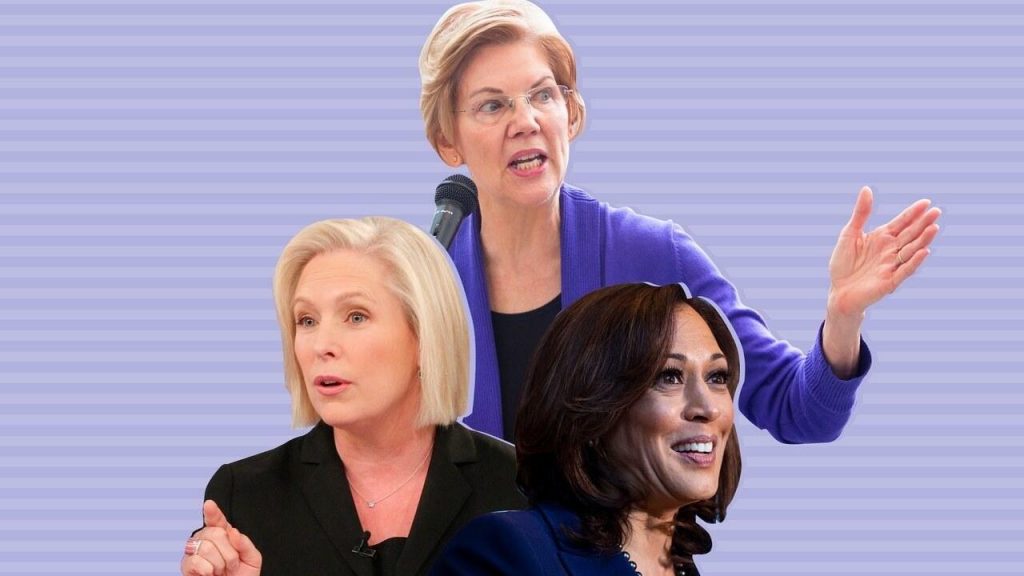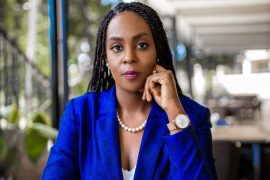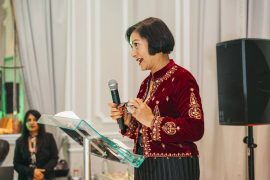As the clock ticks towards the 2020 US Election six women amongst others, have declared their candidacies for the Democratic nomination in 2020. It’s the most women who’ve ever run for a major-party nomination in history.
Until this cycle, there had been, at most, two women who had ever competed in a major party primary, according to the Rutgers Center for American Women and Politics. Now, that number has already been far surpassed, as Sens. Elizabeth Warren, Kirsten Gillibrand, Kamala Harris, and Amy Klobuchar, along with Rep. Tulsi Gabbard and Oprah’s spiritual adviser Marianne Williamson, have all announced presidential runs.
Political science tells us that the surge of women this cycle is in large part due to the inroads Hillary Clinton made in 2016, along with the outrage women across the country have experienced since Donald Trump, an alleged sexual harasser, has taken office. The historic 2018 midterms, which saw the election of more than 100 women Congress members, also demonstrated that women could, overwhelmingly, win.
“Did Hillary inspire many women to run? Absolutely,” says political strategist Maria Cardona, though she adds that the visceral response to Trump’s presidency is likely an even more powerful motivating factor. “I think the anger and fear of what we’re becoming after Trump really lit a fire in women’s bellies.”
But there could be another explanation — one that many women running for office themselves have cited: If Donald Trump can be president, why can’t I run for office? Whether it’s a Clinton effect or a Trump effect is a matter of debate, but it has opened the floodgates for women, especially Democratic women, around the country.
What it takes to get women to run for office
A record number of women ran — and won — in the 2018 midterms, and the same dynamics that led to this boost could be contributing to the increase in women presidential candidates as well.
Clinton, the first woman to secure a major-party nomination for the presidency, carved out a path that other women could follow. Research has found that women in leadership positions can serve as key role models for younger women in their field, and help improve their performance. Additionally, one person’s efforts to break a barrier can make a position seem more accessible to others in the future.
“I think that Hillary did help, but also I think the victories in 2018 helped. It proved that women can mobilize women voters,” says Democratic pollster Celinda Lake, who runs Lake Research Partners.
Thus far, however, Democratic women candidates are still polling far behind other men expected in the field including former Vice President Joe Biden and Sen. Bernie Sanders, though much of their leads could be driven by name recognition.
According to a Monday poll from Monmouth University, Biden is leading the Democratic field with 28 percent of voter support, and Sanders is coming in at 25 percent. Harris currently has 10 percent of voter support.
As much as Clinton can claim credit here, outrage directed at Trump has also been a major mobilization factor for women. Trump is unpopular with women — historically so. Sixty-five percent of women disapprove of his handling of the presidency, according to a recent Quinnipiac poll, compared to 45 percent of men.
Trump also completely shifted the expectation on a candidate’s qualifications, Lake notes.
“Trump definitely mobilized women. Women used to ask, ‘Am I qualified enough?’ Donald Trump is such an unusual candidate and also, from a Democratic perspective, such a flawed candidate, it was liberating,” she says.
It’s also worth noting that women, historically, have been more likely to lean to the left than the right, with a higher proportion of women voting Democratic and running for political seats as Democrats. Fifty-six percent of women lean Democratic, compared to 44 percent of men, according to a Pew Research Center study.
The surge in Democratic women candidates can also be attributed, in part, to longtime investments the party has made in building a bench.
“The filling of the pipeline was a 35-year project or longer,” says Lake, who adds that Barbara Mikulski, one of the first women to join the Senate, used to joke that she was a 30-year overnight success. Emily’s List, one of the organizations that have led recruitment for women and training for women candidates, most recently heard from more than 42,000 women interested in running during the 2018 midterms.
As the New York Times’s Susan Chira noted in a story following the 2018 elections, the degree of funding Emily’s List has brought to the table for Democratic women far outpaces that of some of its Republican counterparts — a dynamic that illustrates just how much Democrats have committed to this effort compared to the GOP:
Emily’s List, which endorses and finances Democratic women who support abortion rights, said it raised $110 million this election cycle and has raised more than $600 million since it was founded in 1985. Value in Electing Women, one of the analogues for Republican women, has raised $4.5 million since it was founded in 1997, according to its website.
More women running is normalizing the presence of female presidential candidates
There are many positive effects of more women running for the presidential nomination, including the fact that gender is no longer solely being used as the differentiating factor among candidates.
“I think that any time we have more women running, and greater diversity among those women, it just challenges those monolithic conceptions of what it means to be a woman candidate,” Kelly Dittmar, an assistant political science professor and CAWP scholar, told CBS News.
Unlike 2016, when Clinton was notably the only woman in the race, this cycle’s Democratic primary and the diverse slate of women candidates competing in it makes it much tougher for voters to simply say they can’t find a woman whose policies appeal to them.
The women candidates this cycle also span the Democratic ideological spectrum, so there are fewer generalizations that can be made about their policy positions and strategies. Warren specializes in regulation of the financial sector, and Harris brings an expansive background as a California prosecutor, for example.
“In order to distinguish between them, voters would have to evaluate them on their policies beyond their gender,” says Mirya Holman, a political science professor at Tulane who studies the intersection of gender and elections.
All these female candidates could normalize even more women running in the future.
Source: Vox





Comments are closed.